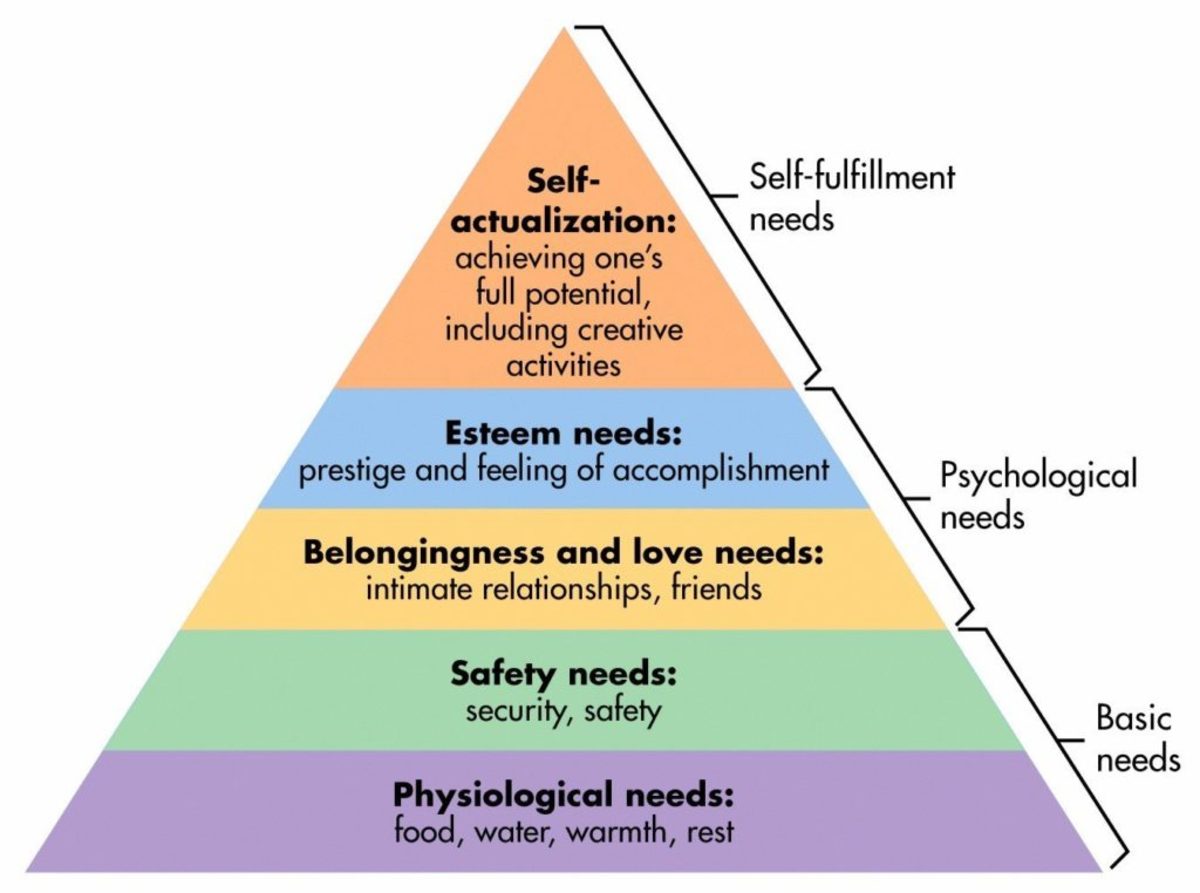What Are The 5 Levels Of Maslow Hierarchy Of Needs?
Abraham Maslow Hierarchy of Needs Theory
Maslow’s Theory of Motivation suggests that individuals have a hierarchy of personal needs that are, universally applicable, identifiable, and that can be satisfied in a priority order in the workplace.
Understanding Abraham Maslow’s idea provides guidance to management as to the appropriateness of motivational approach. The hierarchy of needs is usually depicted in the form of hierarchy pyramid.
Abraham Maslow Hierarchy of Needs Assumptions
The Maslow hierarchy is based on four Assumptions:
- A satisfied need does not motivate. When a need has been satisfied, another need emerges to take its place, so people are always striving to satisfy some need
- The need interactions of most people are complex, with a number of needs affecting each person’s behavior at any one time.
- In general, primary needs must be satisfied before secondary needs are activated sufficiently to provoke motivated behavior
- There are more varied ways of satisfying secondary needs than there are of meeting primary needs.
What Are The 5 Levels of Maslow Hierarchy of Needs?
Maslow’s theory may be summarized and simplified by saying that everyone wants certain things throughout life, and these can be ranked in order of ascending importance:
Basic/Physiological Needs
The things needed to stay alive (food, shelter, and clothing). Such needs require satisfaction before all other needs and can be satisfied by money.
Safety/Security Needs
Protection against unemployment and consequences of sickness and retirement and safeguards against unfair treatment. These needs can be satisfied by employment contracts (pension schemes, sick funds, employment legislation).
Social Needs:
People need to belong, and it is only through group activity that this need can be satisfied. How work is organized, enabling people to feel part of a group is fundamental to this need’s satisfaction.
Ego/Esteem Needs:
People want the esteem of other people and feel good about themselves. While status and promotion can offer short-term satisfaction, to build up the job itself and to give people a more significant say in organizing their work(participation) is to provide the satisfaction of a more permanent nature.
Self-Actualization Needs
This is quite simply the need to achieve something worthwhile in life. It is a need that is satisfied only by continuing success.
Abraham Maslow Hierarchy of Needs Pyramid

Significance of maslow’s hierarchy of needs
The significance of Maslow’s Hierarchy of Needs is that;
- It underlines the relative importance of money. Status has no satisfaction for the man desperate for food and shelter
- It demonstrates that money alone is not enough because, when basic and safety needs become satisfied, people are likely to concentrate their attention on social and ego needs. Motivation of staff depends not only on money but also on the whole employment package embracing:
- Pension, sick fund, canteen arrangements
- Nature of the work done
- Interest and challenge in the work
- Scope in the job for self-expression and self-determination
- Style of management used
Limitations Of Maslow ‘s Hierarchy of Needs Theory
The shortcomings of using Maslow Theory as a motivational tool.
It is effortless to become confused in distinguishing what a person wants and what a person needs. The very simplicity of need theories of motivation, which makes them initially attractive, may also be their greatest weakness.
Motivation is a complex process, and needs are only one component of that process. Apart from being simplistic in its approach, there are other weaknesses associated with the theory. These include:
- A significant criticism of the idea is that not all these needs are, or can be, satisfied through work. The view cannot accommodate an individual seeking to meet several needs at the same time.
- The theory does not recognize the demands of the organizational situation. As a consequence of their product, service, structure, technology, or environment, some organizations do not provide a suitable self-actualization environment.
- The same need can cause different reactions in different people.
- Many people settle for less than reaching the ultimate.
- People have different needs that may not be in the same order.
- If the theory is accepted wholly, it can mislead management in its desire to motivate staff.
- Job satisfaction does not lead to or equal improved work performance.
- The approach ignores the role of others in the workplace and therefore, the modern concepts of teams.





